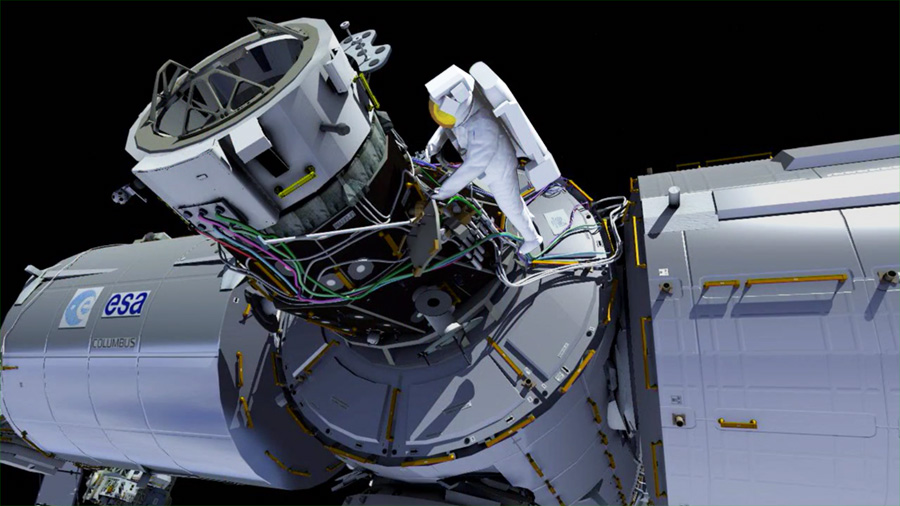
More than sixty months since it last saw the arrival of a human-piloted vehicle, Pressurized Mating Adapter (PMA)-2 at the extreme forward “end” of the International Space Station (ISS) has taken a step closer to soon accommodating another manned spacecraft. On Friday, 19 August, Expedition 48 Commander Jeff Williams and Flight Engineer Kate Rubins—assisted from inside the station by their Japanese crewmate Takuya Onishi—installed the first of two Boeing-built International Docking Adapters (IDAs). These will provide primary and backup docking capabilities for NASA’s Commercial Crew partners, which should see SpaceX’s Crew Dragon and Boeing’s CST-100 Starliner returning U.S. personnel to low-Earth orbit, aboard U.S.-built spacecraft, and from U.S. soil, for the first time since the end of the Space Shuttle era.
Williams and Rubins moved with impressive briskness through their tasks, working ahead of the timeline, and after the IDA-2 installation was completed they were assigned a number of “get-ahead” tasks. However, a slight loss of communications capability in Williams’ suit prompted Mission Control to call it a day and U.S. EVA-36 came to an end after five hours and 58 minutes.
IDA-2 arrived at the space station on 20 July, aboard SpaceX’s CRS-9 Dragon cargo ship. Housed inside Dragon’s unpressurized “trunk,” the 1,150-pound (520-kg) adapter is one of two identical interfaces which will provide primary and backup docking locations for Commercial Crew vehicles from fall 2017 onward. Originally, IDA-1 was intended to be attached to Pressurized Mating Adapter (PMA)-2, at the forward end of the station’s Harmony node, to serve as the primary docking adapter. IDA-2 would then be installed onto PMA-3 at Harmony’s space-facing (or “zenith”) port to facilitate a backup docking adapter. Unfortunately, IDA-1 was lost in a launch failure in June 2015 and IDA-2 was pressed into service as its replacement at the PMA-2 location. A “replacement” docking adapter, IDA-3, is currently being fabricated from spare parts and is expected to fly in spring 2018 to be installed at the PMA-3 interface.
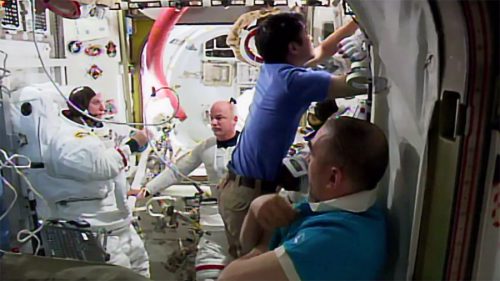
Late on Wednesday, 17 August, IDA-2 was robotically removed from Dragon’s trunk by the station’s 57.7-foot-long (17.6-meter) Canadarm2 mechanical arm and Dextre “hand” and moved to a position about 2 feet (60 cm) away from the PMA-2 interface. The operation was overseen by Robotics Officer (ROBO) David Gruntz, seated at his console in the Mission Control Center (MCC) at the Johnson Space Center (JSC) in Houston, Texas. It remained in this position until Mr. Gruntz brought it slightly closer to PMA-2 early Friday, as Williams and Rubins donned their space suits in the station’s Quest airlock.
The crew’s EVA-36 activities began in the small hours of Friday morning. Joined by Expedition 48 crewmates Anatoli Ivanishin of Russia and Japanese astronaut Takuya Onishi, Williams and Rubins began about 60 minutes of pre-breathing on masks at 3:15 a.m. EDT. During this period, the inner “equipment lock” of Quest was depressurized from its ambient 14.7 psi to 10.2 psi for EVA operations. The duo then pressed ahead with checks of their suits—Williams wore Extravehicular Mobility Unit (EMU) #3003, with Rubins clad in #3008—assisted by Ivanishin and Onishi. By 5:30 a.m., the process of purging the suits was underway and the airlock’s atmosphere was repressurized back up to 14.7 psi.
This enabled the EVA crew to begin a nominal pre-breathing regime, lasting about 50 minutes, followed by a further 50 minutes of In-Suit Light Exercise (ISLE). The latter was first trialed during the third EVA of the STS-134 shuttle mission in May 2011 and serves to rapidly remove nitrogen from the spacewalkers’ bloodstreams, avoiding a potentially fatal attack of the “bends” and skirting the need for Williams and Rubins to “camp out” overnight in Quest. In the meantime, a little after 6 a.m., from the ROBO console in Mission Control, Mr. Gruntz and his team brought IDA-2 into surface-to-surface contact with PMA-2.
Meanwhile, Ivanishin and Onishi transferred a fully-suited Williams and Rubins, together with their tools and equipment, from Quest’s inner equipment lock into the outer “crew lock” a few minutes after 7 a.m. Depressurization of the crew lock commenced shortly afterwards, pausing briefly at 5 psi for pressure and leak checks, before resuming until it achieved a condition of near-vacuum. U.S. EVA-36—the 36th spacewalk in U.S.-built EMUs, conducted without the presence of an attendant space shuttle—officially got underway at 8:04 a.m. EDT, when Williams and Rubins transferred their suits’ life-support utilities onto internal battery power.
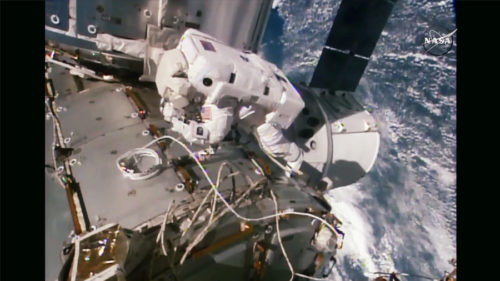
Following the carefully orchestrated timeline closely, Williams departed the airlock first, exactly 10 years to the month since his most recent EVA. Making the fourth spacewalk of his career, Williams was actually the first member of his astronaut class to perform an EVA and with today’s excursion he became the oldest American ever to venture outside an orbital spacecraft. Aged 58 years and 214 days, he neatly surpassed Hubble Space Telescope (HST) spacewalker Story Musgrave by about 102 days. However, Williams falls more than a year shy of the world’s oldest spacewalker. That title is currently held by Russia’s Pavel Vinogradov, who was four months short of his 60th birthday when he went EVA in April 2013. Interestingly, the Capcom for today’s spacewalk was Tom Marshburn, himself a veteran spacewalker and a former crewmate of Vinogradov.
After performing some reconfiguration of tethers, Williams welcomed Rubins to the spacewalking fraternity. Noting the “phenomenal” view as she became only the 12th woman in history to venture outside her spacecraft in orbit, Rubins stands on the shoulders of trailblazing titans Svetlana Savitskaya and Kathy Sullivan, Hubble spacewalker Kathy Thornton, and EVA heavyweights Peggy Whitson and Sunita Williams.
Within a quarter-hour of the start of EVA-36, Williams had reached his first port of call, External Stowage Platform (ESP)-2. Powered from the station’s Unity node, this 8.5-foot x 14-foot (2.6-meter x 4.3-meter) equipment storage pallet is directly attached to Quest and it was from ESP-2 that Rubins retrieved an Articulating Portable Foot Restraint (APFR). The two spacewalkers then translated over the U.S. Destiny lab and along the length of the Harmony node, to reach PMA-2 at its forward end. After collecting his own APFR from atop the Columbus lab, Williams took up a port-zenith position at PMA-2, whilst Rubins anchored herself at the Earth-facing (or “nadir”) side. These positions closely approximated the locations that they would install cables to integrate IDA-2 with PMA-2.
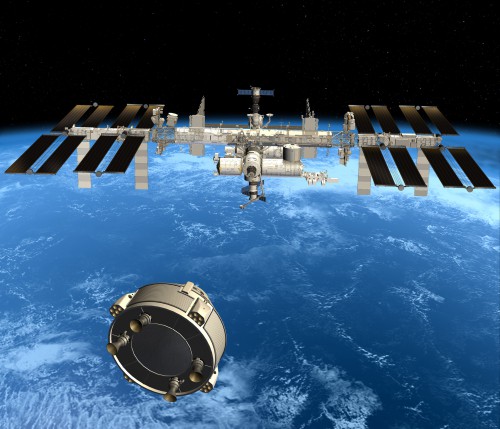
A little more than 30 minutes since leaving Quest, and following some minor problems experienced by Rubins with her APFR, the astronauts were ready to begin the major task of EVA-36. After ingressing their respective APFRs, they attached Adjustable Equipment Tethers loosely to IDA-2, before issuing a “Go” for ROBO to release the new docking adapter from the grip of Dextre. At 9:18 a.m., a little more than an hour into the spacewalk and working well ahead of the timeline, IDA-2 was released. ROBO backed Dextre away, as Williams and Rubins set to work mating a series of heater power, drive, and sensor power cables. Viewers on Earth were presented with spectacular “helmet-cam” imagery from the astronauts’ suits; for PMA-2 and IDA-2 sit at the very “front” of the International Space Station. And like all prime real-estate, the unencumbered view was astonishing.
Inside Harmony, Takuya Onishi was hard at work at the IDA Control Panel, operating switches to command hooks to extend, rotate, and engage their passive counterparts on PMA-2. At 10:30 a.m., he initiated the first of several commands to close the first set of hooks, as the crew continued to press ahead on the timeline. With IDA-2 integrated, Williams and Rubins removed its white thermal cover and stowed it in an Orbital Replacement Unit (ORU) Bag, then removed reflectors previously used for dozens of shuttle dockings at PMA-2 between December 1998 and July 2011 and installed new targets for Boeing’s CST-100 Starliner and SpaceX’s Crew Dragon. Current planning envisages that the SpaceX vehicle may fly an initial unpiloted test flight early next year, followed by a crewed mission in August 2017, with Boeing expected to follow suit a few months later.
By 11:30 a.m., a mere 3.5 hours into their planned 6.5-hour EVA, Williams and Rubins were in the process of cleaning up the IDA-2 worksite, with the expectation that one or more “get-ahead” tasks would be assigned them. Williams extensively photographed the Alpha Magnetic Spectrometer (AMS)-2, ahead of plans to replace sections of its thermal insulation cover, whilst Rubins tended to cabling required to integrate IDA-3 into the complex, sometime in early 2018. This adapter will be attached to PMA-3, which is expected to be moved from its current perch on the station’s Tranquility node to Harmony zenith in the coming months. According to Novosti Kosmonavtiki, the PMA-3 relocation is targeted to occur around February 2017.
However, the EVA was ended early, when Williams experienced communications problems in his suit. Although the astronaut determined that the difficulty was not great, and was prepared to continue his tasks, Mission Control directed the pair back to Quest. They reached the airlock shortly after 1:30 p.m. and EVA-36 ended at 2:02 p.m., after five hours and 58 minutes. Wrapping up his fourth career EVA, Williams has now advanced from 93rd place to 62nd place on the list of the world’s most experienced spacewalkers, with a cumulative total now standing at 25 hours and seven minutes. Rubins became the 216th human being to perform an EVA, since Alexei Leonov’s pioneering excursion, way back in March 1965, and has positioned herself in 179th place on the experience table, sitting just ahead of Kathy Sullivan and Svetlana Savitskaya as the 10th most seasoned female spacewalker. Williams and Rubins are provisionally scheduled to perform EVA-37 on 1 September to retract the Trailing Thermal Control Radiator (TTCR) on the space station’s P-6 truss structure.
Want to keep up-to-date with all things space? Be sure to “Like” AmericaSpace on Facebook and follow us on Twitter: @AmericaSpace





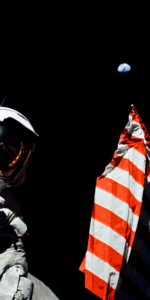
2 Comments
2 Pings & Trackbacks
Pingback:Expedition 48 Spacewalkers Restore Space Station Power Channel to Pre-2012 Configuration « AmericaSpace
Pingback:Multi-National Soyuz MS-01 Crew Prepares for Weekend Return to Earth « AmericaSpace